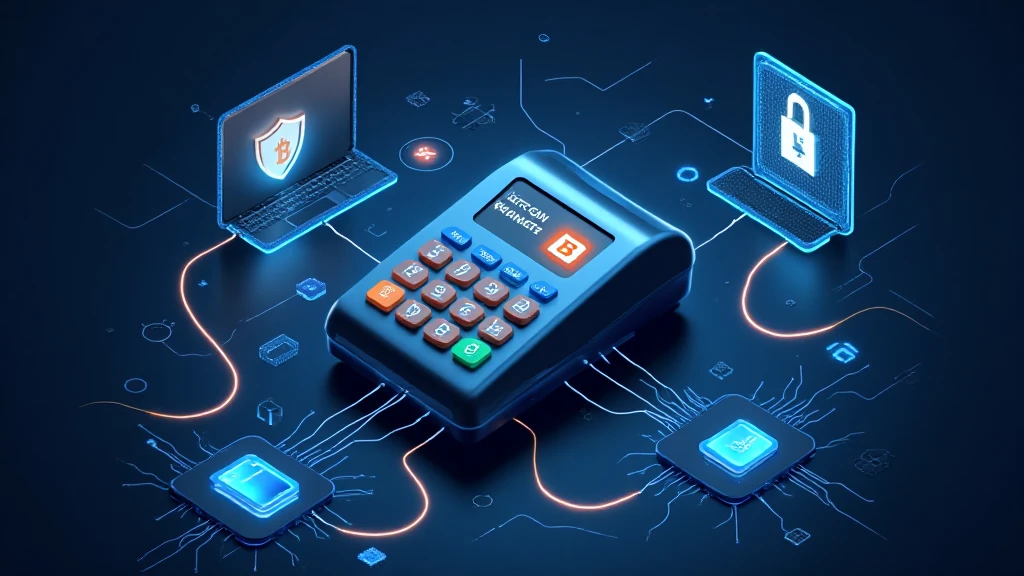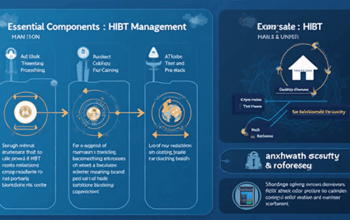Bitcoin Payment Terminal Security: Safeguarding Your Transactions
In 2024, the crypto landscape continued to evolve dramatically, with reported losses reaching $4.1 billion due to DeFi hacks. This staggering figure highlights the importance of protecting digital assets. One of the key components of this protection is ensuring the security of Bitcoin payment terminals, a gateway for transactions in the realm of cryptocurrency.
This article aims to explore the various dimensions of Bitcoin payment terminal security, providing you with actionable insights and best practices to secure your transactions effectively. This guide is designed for anyone who utilizes or manages cryptocurrency payment terminals, from retailers to developers, ensuring that you are equipped with the knowledge needed to fend off threats.
Understanding Bitcoin Payment Terminals
Bitcoin payment terminals act as digital cash registers, enabling merchants to accept cryptocurrency payments efficiently. They allow customers to make transactions using Bitcoin and other cryptocurrencies seamlessly. Just like how banks employ fortified vaults, these terminals require rigorous security measures to safeguard sensitive data and funds.

Let’s break down how these terminals work:
- Transaction Processing: When a customer initiates a purchase, the terminal generates a QR code or shows an address for the payment to be sent to.
- Digital Wallet Integration: Users can pay directly from their wallets, which simplifies cryptocurrency management for both buyers and sellers.
- Instant Conversion: Many terminals provide instant conversion of Bitcoin to local currency, beneficial for merchants who prefer stability in pricing.
Common Security Threats Faced by Bitcoin Payment Terminals
Despite their advantages, Bitcoin payment terminals face several security threats:
- Phishing Attacks: Fraudsters may try to trick users into giving away their private keys or credentials by masquerading as legitimate services.
- Man-in-the-Middle (MitM) Attacks: Cybercriminals can intercept communications between the terminal and the network, compromising sensitive data.
- Malware and Ransomware: Point-of-sale malware can infect terminals, potentially locking merchants out of their systems or stealing data.
It’s crucial to understand these threats to implement the essential security protocols that can mitigate risks.
Best Practices for Securing Bitcoin Payment Terminals
To enhance the security of your Bitcoin payment terminals, consider integrating multiple layers of defense, much like a multi-tiered fortress. Here are some of the best practices:
- Enforce Strong Authentication: Use multi-factor authentication (MFA) to add an extra layer of security beyond usernames and passwords.
- Regular Software Updates: Ensure all terminal software is kept up to date to close any security loopholes that may exist.
- Employee Training: Conduct regular training sessions for employees on identifying phishing attempts and secure handling of transactions.
- Implement Encryption: Utilize encryption protocols (e.g., SSL) for data transmission to protect sensitive information from interception.
By applying these security measures, merchants can provide a safer environment for their customers and protect their assets.
Case Study: Successful Security Implementation in Vietnam
Vietnam’s crypto market has seen significant growth, with a user growth rate of 1311% reported in 2024. With this rapid expansion comes the need for robust security standards.
The successful deployment of Bitcoin payment terminals in major retail chains capitalized on the rise of digital payments. Companies implementing rigorous security measures—such as real-time monitoring and regular audits—reported a reduction in fraud incidents by up to 60%.
This case reiterates the importance of adopting stringent security protocols to meet the demands brought about by an expanding user base.
Future Trends in Bitcoin Payment Terminal Security
As technology advances, new security trends are emerging to protect Bitcoin payment terminals:
- Biometric Authentication: Future implementations include biometric capabilities, such as fingerprint or facial recognition, to enhance user verification.
- Decentralized Finance (DeFi) Integration: Solutions integrating DeFi protocols may provide additional layers of security through decentralized identity verification.
- AI and Machine Learning: AI-powered systems can analyze transaction patterns to detect suspicious activities in real-time.
Embracing these innovations can significantly bolster the security of payment processes, keeping pace with evolving threats.
Conclusion: Proactive Security Is Key
In conclusion, Bitcoin payment terminal security is a critical aspect of cryptocurrency transactions that cannot be overlooked. With risks evolving rapidly, implementing robust security measures will protect assets and foster trust with customers. To stay ahead, merchants and users alike must be proactive in adopting these practices.
Remember, secure your gateway to digital transactions like you would a bank vault. Keep your systems updated, train your staff, and leverage new technologies to safeguard against evolving threats. Only then can you ensure reliable and secure cryptocurrency payment experiences.
For those seeking further information on securing digital assets, visit hibt.com for comprehensive resources.
At btctokenio, we are committed to providing insights and resources necessary for navigating the complexities of cryptocurrency. For those interested in leveraging Bitcoin payment terminals, understanding security is crucial.
Written by Dr. Jane Sample, a certified blockchain security analyst with over 15 published papers and lead audits for several notable cryptocurrency projects.





